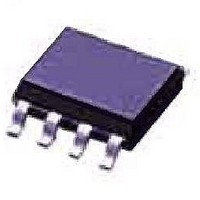QT114A-ISG Atmel, QT114A-ISG Datasheet - Page 16

QT114A-ISG
Manufacturer Part Number
QT114A-ISG
Description
IC TOUCH SENSOR PROX 8SOIC
Manufacturer
Atmel
Series
QLevel™r
Type
Liquid or Powderr
Datasheet
1.AT42QT1040-MMH.pdf
(72 pages)
Specifications of QT114A-ISG
Output Configuration
Open Collector: Dry-Low
Mounting Type
Surface Mount
Operating Temperature
-40°C ~ 85°C
Voltage Rating
2.45 ~ 5.25 V
Current
20uA
Current - Supply
*
Output Type
*
Interface
*
Input Type
*
Operating Supply Voltage
2.5 V to 5.25 V
Maximum Operating Temperature
+ 85 C
Mounting Style
SMD/SMT
Package / Case
SOIC-8
Minimum Operating Temperature
- 40 C
Lead Free Status / RoHS Status
Lead free / RoHS Compliant
Package / Case
-
Lead Free Status / Rohs Status
Details
10620D–AT42–04/09
General Advice
2.3.4
2-6
PCB to Panel Bonding
Table 2-1. Relative Dielectric Constants for Materials (Continued)
A useful metric when dealing with panels of different thicknesses and materials is the sensitivity factor
(S), given by
Equation 2-4. Sensitivity Factor (S)
In the case of a stack of materials, the combined
Equation 2-5. Dielectric Constant (
As can be seen, very thick panels will greatly reduce the sensitivity factor. If you need to use materials
that are thicker than what is considered normal practice (for example, if you need to sense through a
20 mm glass panel or a 10 mm acrylic panel), then be very careful about anything that increases
parasitic loading to the rear of the sensor. More on this in later sections.
When designing a decorated front panel, be aware that some paints and finishes can be substantially
conductive (refer to QTAN0021, Materials and Coatings Selection for Atmel Capacitive-touch Panels, for
more information).
Good contact between the substrate and the panel is essential for reliable performance. An unreliable
interface which can change by even 100 microns after being touched by a finger can cause
unacceptable signal fluctuations. Adhesives or compression mechanisms can be used to reliably
overcome these problems. Non-adhesive solutions can for example involve the use of co-convex
surfaces that are placed under preloaded pressure when clamped together, to ensure complete surface
mating.
Various methods have been used to mechanically clamp electrode substrates to panels, including heat
staking plastic posts, screws, ultrasonic welding, spring clips, non-conductive foam rubber pressing from
behind, etc.
Material
Pyrex Glass
Quartz
Rubber
FR4 (Glass Fiber + Epoxy)
PMMA (Polymethyl Methacrylate)
Typical PSA (Pressure Sensitive Adhesive)
Equation
S =
where:
1/S
where:
t is the thickness of the layer in question
n is the number of layers
Sum is the sum of all terms
STACK
r
is the dielectric constant of the layer in question
r
/ t
2-4.
= Sum(1/S
LAYER
r
) for a Stack of Materials
[n])
Dielectric Constant (
4.3 to 5.0
4.2 to 4.4
3
4.2
2.6 to 4
2.5 to 2.7
r
for the whole stack is given in
r
)
Touch Sensors Design Guide
Equation
2-5.












